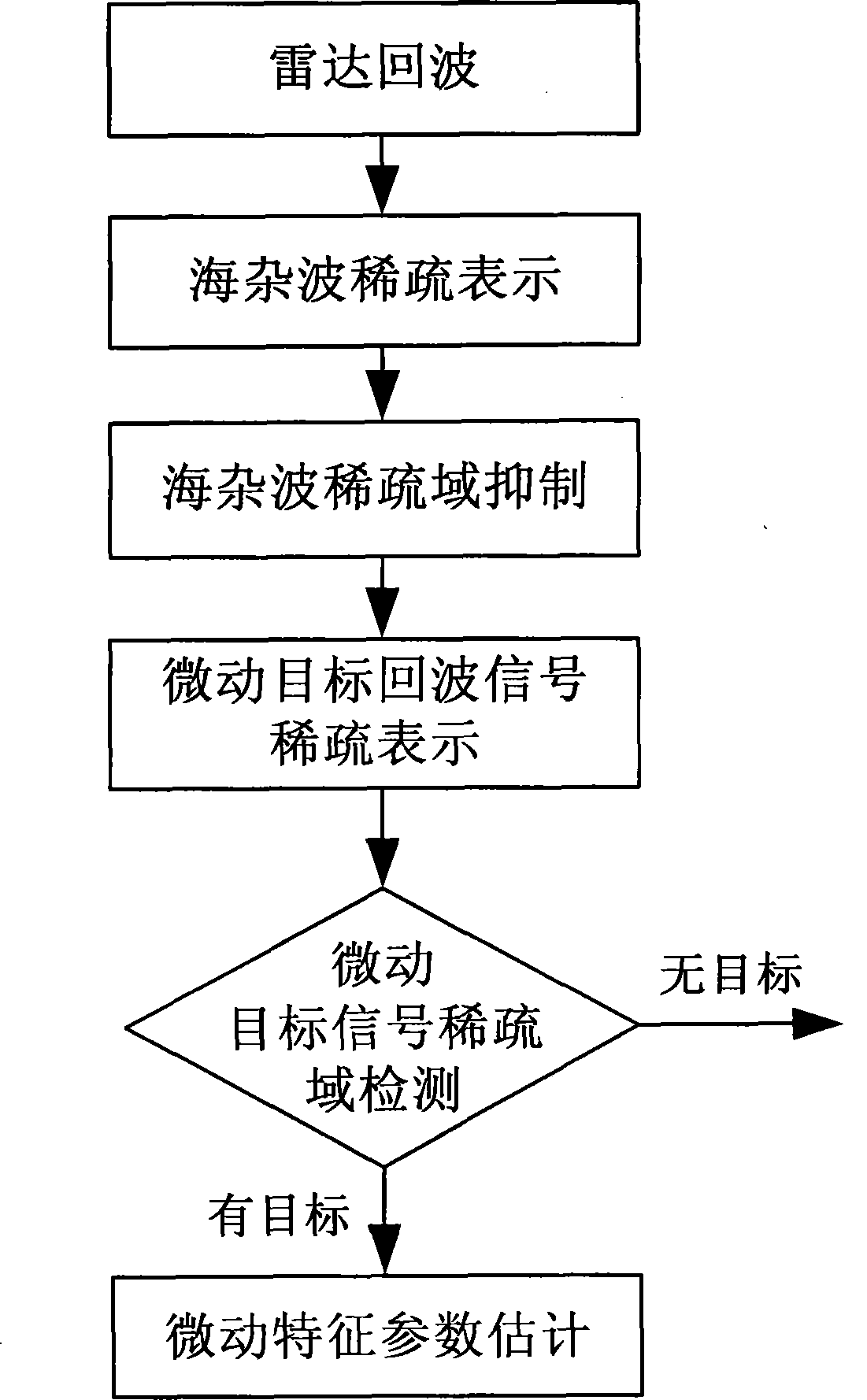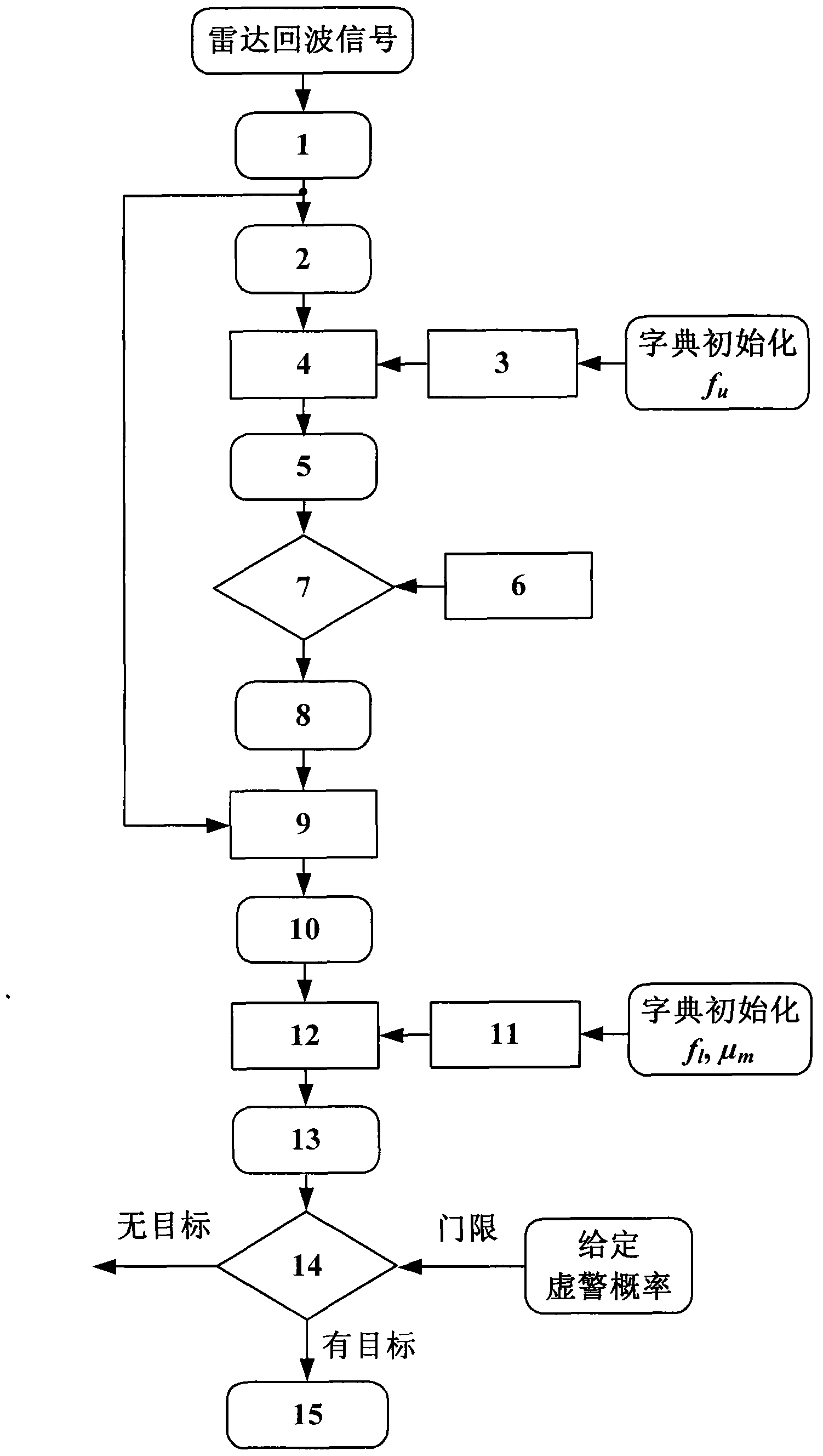Sea surface micro-motion target detection and characteristic extraction method based on morphological component analysis
A technology of morphological component analysis and micro-moving targets, applied to radio wave measurement systems, instruments, etc., can solve problems such as estimation performance limitations, and achieve the effect of improving signal-to-clutter ratio and suppressing sea clutter
- Summary
- Abstract
- Description
- Claims
- Application Information
AI Technical Summary
Problems solved by technology
Method used
Image
Examples
Embodiment Construction
[0027] The following is attached with the manual figure 1 The present invention is described in further detail. Refer to the attached figure 1 , the processing flow of the present invention is divided into the following steps:
[0028] (1) Sparse representation of sea clutter;
[0029] (2) Sea clutter sparse domain suppression;
[0030] (3) The echo signal of the micro-moving target is sparsely represented;
[0031] (4) Micro-motion target signal sparse field detection;
[0032] (5) Estimation of fretting characteristic parameters.
[0033] The following is attached with the manual figure 2 The present invention is described in further detail. Refer to the attached figure 2 , the specific embodiment of the present invention divides the following steps:
[0034] (1) Send the radar echo in the same distance unit obtained after amplification and demodulation to the storage device 1 for preprocessing, and obtain the input signal sequence x(i) of N sampling points, i=1, ...
PUM
 Login to View More
Login to View More Abstract
Description
Claims
Application Information
 Login to View More
Login to View More - R&D
- Intellectual Property
- Life Sciences
- Materials
- Tech Scout
- Unparalleled Data Quality
- Higher Quality Content
- 60% Fewer Hallucinations
Browse by: Latest US Patents, China's latest patents, Technical Efficacy Thesaurus, Application Domain, Technology Topic, Popular Technical Reports.
© 2025 PatSnap. All rights reserved.Legal|Privacy policy|Modern Slavery Act Transparency Statement|Sitemap|About US| Contact US: help@patsnap.com



